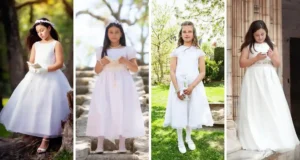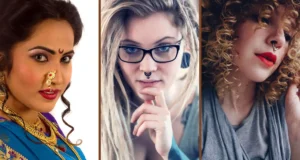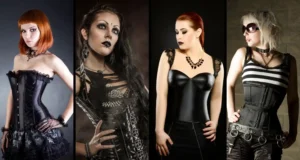Chokers have a long history, dating back thousands of years to some of the earliest civilizations. Sumerian artisans crafted golden choker necklaces as early as 2500 BC, showing they were worn in Mesopotamia at that time. Ancient Egyptians also wore chokers, believing they had protective properties that warded off evil spirits.
Chokers have been in and out of fashion for centuries. In the 19th century, chokers became fashionable among British teens and Victorians. Victorians often hid scars or blemishes with chokers.
During the 1920s, chokers called “beaded chokers” grew popular among flappers. In the 1940s, chokers reemerged as “dog collars” made from lace and velvet.
While women have traditionally worn chokers, people of all genders have worn them at various historical points. Chokers have been associated with different cultural movements and worn for different reasons over the years.
Today, chokers are making a comeback in fashion. They are worn as a style statement by people of all ages. Modern chokers come in various materials like leather, metal, and fabric.
Though chokers have been in and out of style for thousands of years, they have deep historical roots as protective amulets in some of the earliest civilizations. Chokers have remained adaptive over time, taking on new meanings and materials that reflect the cultural values of different eras.
What was the original purpose of chokers?
Chokers have existed for millennia, and while fashion and status have factored into their history, chokers also served more symbolic purposes for the women who wore them.
In ancient civilizations like the Sumerian Empire and Ancient Egypt, women viewed chokers as protective amulets that warded off evil spirits and brought good luck.
Sumerian women crafted chokers from materials believed to have magical properties, including beads and gold. Egyptian women wore lapis lazuli and gold chokers to protect and highlight their beauty.
Chokers were symbols of wealth, social standing, and modesty for Victorian women, who adorned their elaborate necklace pieces with precious gems. Covering the neck was seen as a sign of discretion and propriety.
In the 1940s and 1990s, chokers conveyed different meanings. ‘Colliers de Chien signaled femininity and allure during World War II. Grunge chokers from the 1990s projected defiance and nonconformity for a new generation.
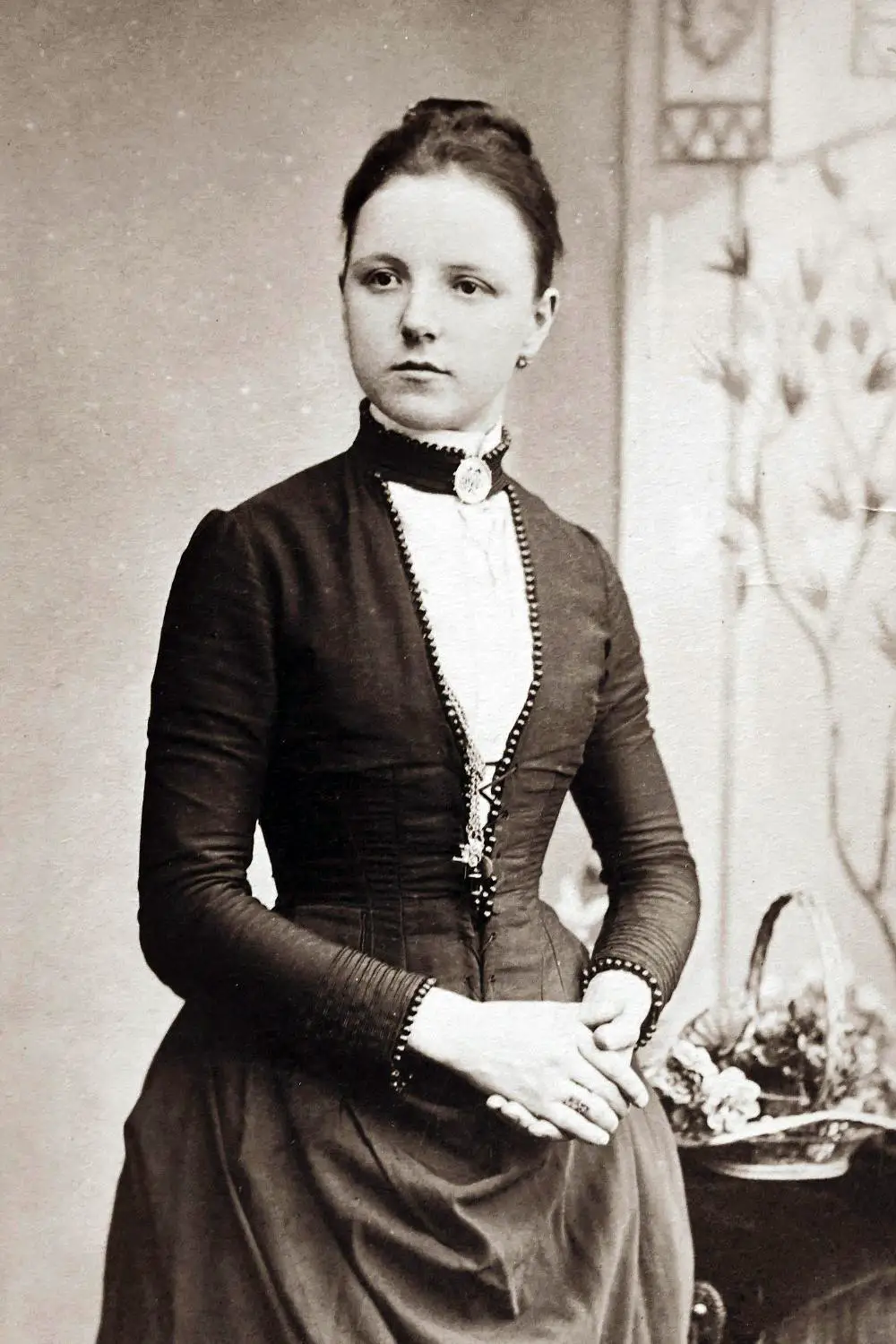
Today, chokers remain fashionable yet serve varied purposes. They symbolize individual styles and personalities for modern wearers across genders and cultures. Some still see chokers as protective adornments due to their ancient heritage.
In essence, chokers originally held symbolic importance beyond mere decorativeness for the women who chose to wear them.
Across eras and civilizations, chokers have embodied notions of attractiveness, status, modesty, rebellion, and luck, imbuing this simple accessory with multilayered meanings that have evolved with shifting fashion tastes and social norms.
While fashionability factors into choker history, symbolic functions like expressing identity and personality have persisted as core reasons for their enduring appeal.
The beliefs associated with wearing chokers in ancient civilizations
In ancient civilizations, chokers were imbued with beliefs that they possessed protective and healing properties for those who wore them.
Egyptians and Mesopotamians viewed chokers as amulets that warded off evil and brought good fortune. Egyptian women wore elaborate choker necklaces made of precious materials believed to have magical properties that repelled harm.
Mesopotamians crafted chokers from beads and shells thought to have healing powers.
For these ancient cultures, the neck was considered an area of utmost importance, surrounding the wearer’s life force. Adorning women’s necks with chokers aimed to safeguard this vital body part. Chokers also highlighted the beauty and femininity of the wearer.
Beyond their protective functions, chokers in some ancient societies signified status. Sumerian women donned chokers made with expensive materials to display their ranks in the social hierarchy.
Across millennia, chokers have carried symbolic meanings beyond fashion. For ancient civilizations, chokers primarily served protective and healing purposes, safeguarding the body and souls of the women who wore them.
The neck’s proximity to vital organs and life force imbued its adornments with supernatural properties that endowed their bearers with luck, fortune, and safety.
What materials were used to make chokers in different ancient civilizations?
Chokers in ancient civilizations were made from various materials that reflected their symbolic significance.
Precious materials like gold and gemstones were commonly used. Egyptians and Mesopotamians crafted elaborate gold chokers believed to repel evil spirits and bring good fortune.
Indian and Chinese women wore gemstone chokers thought to have healing energies that blessed the wearer.
Beads, shells, and leather were also popular choices. Beaded chokers decorated with symbols of fertility signified prosperity for many cultures.
Native Americans and Celts utilized durable leather and shells in choker designs that symbolized nature and strength.
Precious metals like silver were fashioned into chokers in Europe, viewed as capable of protecting the wearer.
Across civilizations, materials were selected according to their perceived mystical properties that could benefit the wearer.
Chokers made from gold, gemstones, beads, and plant fibers were believed to endow the wearer with luck, wealth, and safety, resulting in their widespread popularity. The choice of materials thus reflected ancient peoples’ deep beliefs about chokers’ protective powers and spiritual importance.
While choker designs varied, they united in representing carriers of fortune, luck, and protection for wearers. Precious substances like gold symbolized status and nobility, while more mundane materials fashioned into chokers for cultures without access to riches represented notions of nature and strength.
Regardless of materials, chokers held significant symbolic value, imbued with abilities that could positively impact wearers’ lives.
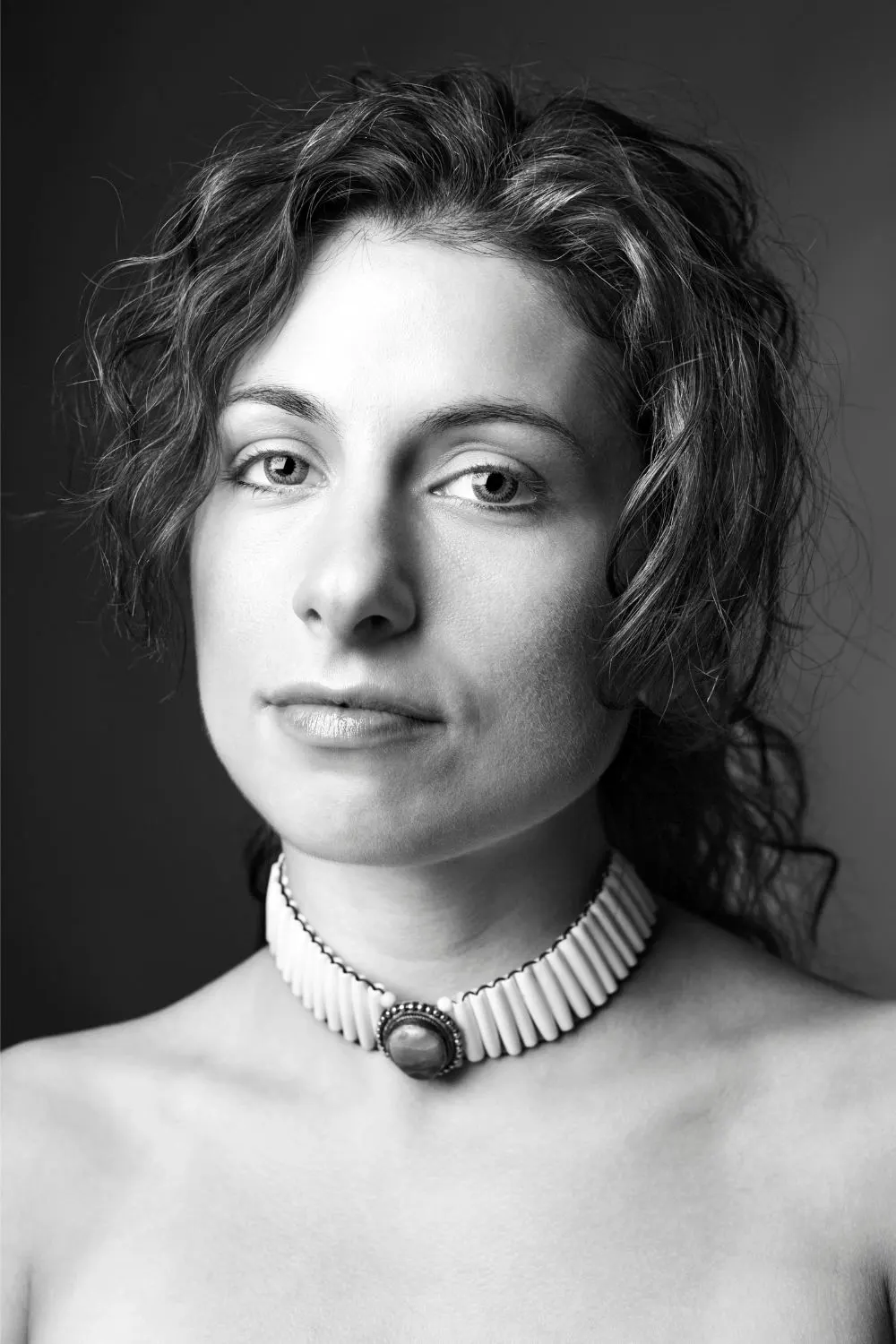
Evolution of Chokers
Ancient civilizations: Chokers as protective symbols with metals or beads.
The history of chokers shows how they have evolved from protective amulets in ancient civilizations to fashion accessories today.
In ancient times, chokers were seen as more than just jewelry. In ancient Egypt and Mesopotamia, chokers were crafted from precious materials and believed to have spiritual purposes.
Egyptians saw chokers as protective amulets that warded off evil. Mesopotamians thought chokers brought good luck and safeguarded an important body part.
Throughout the 19th and early 20th centuries, chokers regained popularity. In the Victorian era, women wore chokers to hide imperfections. In the 1920s, beaded chokers became fashionable among flappers. During World War II, collared chokers emerged.
While traditionally worn by women, chokers have also been worn by people of all genders at different times. They have been associated with political statements, cultural movements, and expressions of personal style.
Today, chokers have returned as simple accessories reflecting current fashion trends. They come in many materials and styles and are worn by people of various ages. Though no longer seen as protective charms, some still believe chokers can enhance one’s aura or bring good fortune.
Chokers have evolved greatly over thousands of years. What began as spiritual neckpieces worn for spiritual purposes now primarily serve an aesthetic function.
Yet the basic concept of a close-fitting neck accessory has persisted through various changes in style, material, and meaning. This reflects the adaptability of fashion to suit different cultural contexts over time.
Victorian era: Fashion statement adorned with jewels for elegance.
During the opulent Victorian era, chokers regained popularity as glamorous accessories for affluent women. Often adorned with precious gems, these fashionable chokers symbolized luxury, grace, and refinement.
Victorian chokers were frequently made of gold or silver and decorated with diamonds, pearls, or other jewels. They embodied the elegance and wealth of aristocratic Victorian society.
Queen Alexandra of England popularized the “dog collar” choker decorated with diamonds and pearls, sparking a “colliers de chien” trend.
While associated with prostitutes in some areas, chokers were widely worn by Victorian women of all classes for stylish purposes. Actresses, singers, and socialites often donned choker necklaces to accessorize their high-necked dresses and display prestige.
The vogue for Victorian chokers faded in the early 20th century. However, chokers have recently made a comeback, now embraced as a versatile fashion statement by people of various ages.
Modern chokers come in many materials beyond precious metals and gems, reflecting contemporary aesthetic preferences.
Victorian chokers represented the luxurious tastes of the time for fashionable women, exemplifying elegance and social status. Though no longer limited to expensive jewels, today’s chokers exhibit a similarly adaptable and expressive function as stylish accessories that accentuate the wearer’s personal attributes and flair.
The 1920s: Art Deco movement brings bold designs and glamour.
In the 1920s, chokers experienced a resurgence as fashionable neckwear for flappers. Decorated with bold Art Deco designs in stylish materials, these chokers embodied the glamour and liberation of the era.
During the 1920s, geometric beads and silk chokers adorned with geometric shapes became trendy. These chokers complemented the androgynous bob haircuts and relaxed fashions of flappers, symbolizing their young and carefree spirit.
Famous actress Louise Brooks popularized a black bead choker known as the “Choker of the Century,” which sparked a more widespread trend.
Art Deco style featured linear designs and the use of luxurious materials like ivory, platinum, and silk. 1920s chokers matched these aesthetics, typically featuring graphic diagonal or chevron patterns, bold shapes, and precious materials.
Flappers embraced chokers as symbolizing their youthful independence and emancipated lifestyle. Chokers suited flappers’ preference for unfussy yet sophisticated style.
By wearing chokers, flappers demonstrated their embrace of new social freedoms for women during the 1920s.
1920s chokers represented the glamorous tastes of the era for fashionable flappers, channeling the ideals of independence, sophistication, and fun that characterized the flapper spirit.
Though no longer limited to exuberant Art Deco motifs and precious materials, today’s chokers exhibit a similarly expressive function as indicators of the wearer’s personal aesthetic and lifestyle.
The 1940s: “Colliers de chien” – velvet or lace femininity.
In the 1940s, chokers made a comeback in the form of “colliers de chien,” or velvet and lace neck collars that exuded femininity.
“Colliers de chien,” meaning “dog collar” in French, quickly caught on in Paris and became a trend in the 1940s. These chokers were often crafted from luxurious materials like velvet and delicate lace. They served as a symbol of femininity and allure during a time that emphasized women’s domestic roles.
1940s chokers were worn with both formal ball gowns and everyday wartime dresses. They complemented the feminine fashion of the time, featuring cinched waists, full skirts, and covered shoulders.
Actresses and socialites donned chokers to add elegance and sophistication to their looks, offering a touch of glamour amidst the austerity of the war years.
One of the most iconic 1940s chokers was worn by actress Veronica Lake. Her black velvet “Velvet Choker” sparked a “Chokers à la Veronica Lake trend.” Fashionable women of the era emulated Lake’s effortlessly chic style by donning similar velvet and lace neck collars.
In summary, 1940s chokers represented the romantic tastes of the time for elegant women, exemplifying femininity and flair. Though no longer limited to luxurious fabrics, today’s chokers exhibit a similarly expressive function as flattering accessories that accentuate the wearer’s femininity and individual sense of beauty.
The 1970s: Men embrace chokers in hippie and music culture.
In the 1970s, chokers gained popularity among men as part of the hippie and countercultural movements.
During this era, chokers were often crafted from leather, feathers, and beaded materials. Musicians, artists, and activists wore them to symbolize rebellion and nonconformity.
Rock musician Mick Jagger popularized a black leather “Leather Choker” that inspired a “Chokers à la Mick Jagger trend.”
Male choker wearers contested conventional Western gender norms of the time. By adopting what was traditionally seen as a feminine accessory, men demonstrated their free spirits and rejection of mainstream values.
Chokers thus signified individuality, artistic creativity, and unity among diverse groups.
Chokers were particularly popular among early punks who embraced DIY aesthetics and androgynous styles. Punks used accessories like chokers to convey anti-establishment attitudes that challenged social expectations.
1970s chokers represented nonconformist tastes of the counterculture for creative men. Though no longer limited to rebellious styles, today’s chokers still exhibit an expressive function as symbols of the wearer’s individuality and distinctive personality.
Worn by people of all genders and backgrounds, chokers demonstrate how fashion continues to evolve, reflecting changing perspectives on cultural norms.
The 1990s: Rebellion and grunge fashion make chokers iconic.
In the 1990s, chokers regained popularity as symbols of rebellion and individuality among grunge icons like Gwen Stefani and Courtney Love.
During this era, black leather, studded and spiked chokers were often worn with baggy jeans, flannel shirts, and combat boots. Chokers signified nonconformity, attitude, and expression of one’s authentic self.
Gwen Stefani popularized her iconic “Harajuku Choker,” inspiring a “Chokers à la Gwen Stefani trend.” Other grunge women donned chokers to accessorize crop tops, mini skirts, and boots, showcasing their edgy sense of style.
The resurgence of chokers in the 1990s represented a shift from their former role as merely fashionable accessories.
Chokers became symbols of youth culture and counterculture, reflecting the rise of grunge and alternative movements. Choker wearers conveyed individuality, rebelliousness, and nonconformity through a traditionally feminine yet subverted fashion element.
1990s chokers represented the alternative tastes and ideals of grunge icons for stylish women, channeling themes of rebellion, authentic self-expression, and opposition to mainstream norms.
Though no longer limited to grunge style, today’s chokers still symbolize individuality and unconventionality for wearers of diverse backgrounds.
2010s: Contemporary chokers with bold metals and embellishments.
In the 2010s, chokers made a triumphant fashion comeback, with designers creating contemporary styles using luxurious materials and embellishments.
Choker trends from the 1990s and earlier decades resurfaced in the 2010s but with a modern twist. Popular styles included pearl chokers signifying elegance.
Metal chokers connote luxury, embellished chokers symbolize individuality, and multi-layer chokers add drama. Popular plastic tattoo chokers from the 1990s also reemerged.
Celebrities and fashion icons adorned themselves with chokers, helping propel the trend into the mainstream once more. The versatility of chokers appealed to a broad spectrum of fashion tastes. Chokers could be dressed up for a sophisticated look or dressed down for a casual aesthetic.
2010s chokers represented the renewed tastes for versatile yet statement-making accessories. Though no longer limited to historically, chokers have passed through many phases of popularity.
In the 2010s, chokers made a triumphant comeback with a contemporary twist that appealed to diverse fashion preferences. Designers created luxurious styles using pearls, metals, and embellishments that balanced sophistication with individuality.
Celebrities adopted chokers, further propelling the trend into the mainstream. The versatility of chokers – able to be dressed up or down – allowed them to complement a wide range of styles.
Though no longer symbolic of counterculture or rebellion, modern chokers functioned as statement accessories that helped wearers express their personal style.
Today: Popular, versatile fashion accessory for all ages.
In the present day, chokers continue to be highly sought after due to their versatility and timeless appeal.
Chokers are available in various materials, colors, shapes, and styles to suit any taste. Designers create modern chokers using bold metals, pearls, and embellishments for a contemporary feel. Celebrities popularize new choker trends, which then go mainstream.
People of all ages and backgrounds embrace chokers as an adaptable fashion accessory. They can easily dress up an outfit from casual to elegant simply by adding a basic choker. Choosing a classic pearl choker or an edgy leather style often adds a touch of sophistication.
Chokers’ versatility allows them to complement many outfits. They can be worn with midriff-baring tops, off-the-shoulder dresses, or jeans. Chokers also help express the wearer’s personality.
In summary, modern chokers represent a timeless yet customizable style option. Though no longer symbols of subculture trends, today’s chokers function as a statement accessory that helps individuals express their personal aesthetics.
Chokers’ continued popularity stems from their adaptability, chameleon-like quality to match any look, and ability to elevate simple outfits effortlessly.
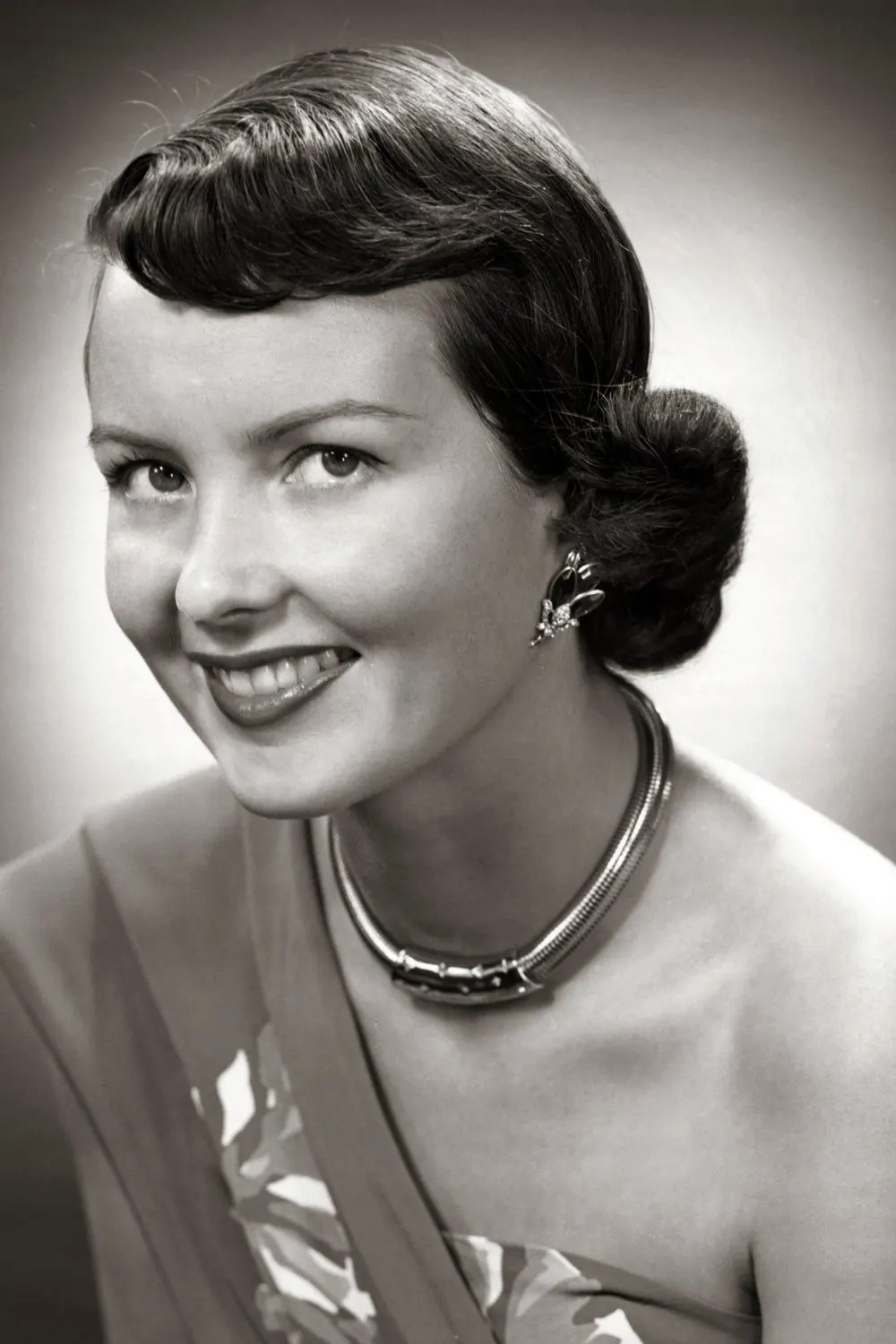
Summary
Chokers have a long history, dating back thousands of years to ancient civilizations like Sumer and Egypt. They were believed to have protective and healing properties.
Chokers went in and out of fashion in different eras, from the Victorian era to the 1920s and 1940s. People of all genders wore them during the countercultural movements of the 1970s and the rebellious grunge fashion of the 1990s.
In the 2010s, chokers returned with contemporary styles using bold metals and embellishments. Today, chokers remain popular and versatile fashion accessories for all ages, adding a touch of sophistication and expressing individual style.
FAQ
When did chokers become a thing?
Chokers became a fashion statement thousands of years ago in ancient civilizations like Sumer. During the Victorian era, they experienced a revival among wealthy women adorned with luxurious jewels. In the 1790s, they were worn as a mockery of the French aristocracy during the French Revolution, turning into a fashion trend. Chokers have a rich history full of drama and glamour, making them anything but simple necklaces.
Why did Native Americans wear chokers?
Native Americans wore chokers for cultural, spiritual, and practical reasons. Chokers served as protective gear for warriors during battle, guarding their jugular and deflecting arrows. They also indicated high social status and wealth in Native American culture. Today, some Native Americans continue to wear bone chokers for spiritual protection and good luck.
What were chokers called in 1800s?
In the 1800s, chokers had various names and associations. In England, they were used to mock the French, with young women wearing red ribbon chokers to taunt the French aristocracy during the French Revolution. Chokers symbolized elite fashion and glamour, particularly during the Victorian era, and were associated with royalty. In the 1920s and 1940s, chokers experienced a resurgence and were referred to as “dog collars” or “colliers de chien” in their French variation, signifying their association with elite fashion. Additionally, chokers were also seen in ballerina costumes during the late 1800s.
What is the Queen’s choker?
The Queen’s Choker refers to various choker necklaces associated with Queen Elizabeth II. One example is the HM The Queen’s Pearl Choker, a gift from Japan featuring glass beads and measuring 16 inches in length. Another notable piece is the Queen Crown Pearl Choker Body Chain, a regal and elegant adornment that combines the allure of a choker with the grace of a spine. These chokers showcase the Queen’s exquisite taste in jewelry, adding a touch of royalty and elegance to her regal appearance.
What is the surprising dark history of the choker necklace?
In the 1860s, choker necklaces were associated with prostitution in some parts of Europe, including England. In Manet’s famous painting, “Olympia” (1863), a prostitute is depicted wearing a black ribbon around her neck.
